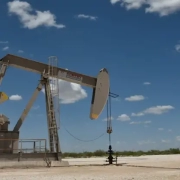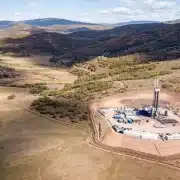Oil and Gas Development on Tribal Land: Unique Challenges and Opportunities
Oil and gas development has long been a critical aspect of the global energy sector, supplying resources necessary for powering industries, transportation, and households. However, when it comes to oil and gas development on tribal lands, the situation becomes more complex. Native American tribes hold a unique position in the United States when it comes to land ownership, legal authority, and economic development. The intersection of resource extraction with the sovereignty of tribal nations has created an array of unique challenges and opportunities that require careful consideration, collaboration, and respect for tribal rights.
In this article, we will explore the complexities surrounding oil and gas development on tribal lands. This includes the economic opportunities it can present for Native American communities, the legal and environmental challenges that must be navigated, and the potential for creating mutually beneficial partnerships between tribes, government entities, and private companies. We will also examine the growing role of Native American tribes in the broader energy landscape and the potential for sustainable energy solutions in tribal communities.
Understanding Tribal Sovereignty and Land Ownership
Tribal sovereignty is a foundational principle that governs the relationship between Native American tribes and the United States government. Sovereignty refers to the inherent right of tribes to govern themselves, make decisions about their land and resources, and exercise jurisdiction over their territories. While tribes have retained a degree of sovereignty, the U.S. government retains significant authority over tribal lands and resources through treaties, federal laws, and regulatory frameworks.
Tribal lands, which include both reservations and trust lands, are distinct from other types of land ownership in the U.S. These lands are held in trust by the federal government for the benefit of tribes and are subject to a unique set of rules. Unlike private landowners, tribal nations do not have full control over their lands in the same way other landowners do. The federal government, through agencies like the Bureau of Indian Affairs (BIA) and the Bureau of Land Management (BLM), has authority over land leases, resource extraction, and environmental protections.
This legal structure makes oil and gas development on tribal lands a distinct process compared to other types of land-based resource extraction. Tribes, while having sovereignty, often must work within a framework of federal regulations and oversight to develop their natural resources. This presents both challenges and opportunities that are specific to tribal land ownership.
Economic Opportunities for Tribes from Oil and Gas Development
Oil and gas development on tribal lands can provide significant economic opportunities for Native American communities. Given the historical challenges faced by many tribal nations in terms of poverty and limited access to resources, the development of natural resources such as oil and gas can be a crucial source of revenue. In many cases, revenue generated from these resources can fund essential services, such as healthcare, education, infrastructure, and economic development initiatives.
In addition to direct economic benefits, tribes can also create long-term economic opportunities through oil and gas development in several ways:
- Job Creation: Oil and gas projects can generate numerous employment opportunities for tribal members. These jobs can range from technical and skilled labor to administrative, legal, and financial positions. As the oil and gas sector requires a wide range of skills, tribes can foster workforce development and create opportunities for tribal members to gain training and expertise.
- Revenue Sharing: Tribes can negotiate revenue-sharing agreements with private companies engaged in oil and gas extraction on tribal lands. These agreements can provide tribes with a percentage of the profits generated from resource development, which can be reinvested into community programs, infrastructure, and other areas that improve the quality of life for tribal members.
- Business Development: Oil and gas development can stimulate local economies and create opportunities for tribal-owned businesses. For example, local suppliers, contractors, and service providers may have opportunities to work with oil and gas companies. Tribes can also establish joint ventures or partnerships with private companies, allowing them to benefit from the profits generated by resource extraction while maintaining a degree of control over the development process.
Despite the potential economic benefits, the development of oil and gas resources on tribal lands comes with significant challenges that must be carefully navigated.
Legal and Regulatory Challenges in Oil and Gas Development
One of the most significant challenges in oil and gas development on tribal lands is the complex legal and regulatory framework that governs these activities. Tribal nations must work with federal and state agencies to ensure compliance with environmental, safety, and resource management regulations. This often requires navigating a complicated bureaucratic system, which can delay projects and introduce additional hurdles.
Some of the legal and regulatory challenges include:
-
Federal Oversight and Jurisdiction on Oil and Gas Development
: The U.S. government plays a central role in overseeing oil and gas operations on tribal lands. Tribes must often work with agencies like the BIA and BLM to secure the necessary permits, leases, and approvals for resource extraction. These federal agencies are responsible for ensuring that development projects comply with environmental and safety standards. However, the complexity of these federal regulations, along with the involvement of multiple government agencies, can create delays and bureaucratic inefficiencies.
-
Trust Land Issues
: Much of the land on reservations is held in trust by the federal government for the benefit of tribes. This trust arrangement means that tribal nations cannot independently lease their land for oil and gas development without federal approval. Additionally, tribes must navigate the rules and restrictions associated with land leases, which can complicate the negotiation process. The federal government’s involvement can sometimes create challenges in terms of negotiating the best possible deals for tribes, as tribal interests may not always align with federal priorities.
-
Competing Interests on Oil and Gas Development
: On some tribal lands, there may be competing interests when it comes to resource extraction. For example, certain lands may be home to sacred sites, natural resources, or cultural heritage that could be endangered by oil and gas development. Tribes must balance the potential economic benefits of resource extraction with the preservation of their cultural, spiritual, and environmental values. Additionally, some tribal members may oppose oil and gas development due to concerns about environmental degradation, public health, or the long-term sustainability of resources.
-
Environmental and Safety Regulations
: Oil and gas development comes with a host of environmental risks, including the potential for groundwater contamination, air pollution, and habitat destruction. Tribes must ensure that oil and gas operators adhere to environmental protection standards and mitigate any adverse effects on the land and surrounding ecosystems. The need for environmental impact assessments, monitoring, and enforcement of regulations can add complexity to the development process.
Environmental Impact Considerations
The environmental impact of oil and gas development is a key concern for many Native American tribes. Tribes have a deep connection to the land and its resources, and they often view environmental stewardship as a sacred responsibility. As such, the potential environmental consequences of oil and gas extraction on tribal lands must be carefully evaluated and managed.
Some of the key environmental issues associated with oil and gas development on tribal lands include:
- Water Contamination: Hydraulic fracturing (fracking) and drilling operations can pose a risk to groundwater and surface water. Contaminants from drilling fluids, wastewater, and oil spills can potentially harm water resources that are vital to tribal communities for drinking, irrigation, and fishing. Many tribal communities rely on local water sources, and contamination can have serious long-term health and economic implications.
- Air Quality: Oil and gas extraction can release pollutants such as methane, volatile organic compounds (VOCs), and particulate matter into the air, which can degrade air quality and contribute to respiratory problems. These pollutants can also contribute to climate change and affect the broader ecosystem.
- Ecosystem Disturbance: Oil and gas development often involves clearing land, building infrastructure, and disrupting local ecosystems. This can lead to habitat destruction, species displacement, and changes to the natural landscape. For tribes with a strong cultural connection to the land, preserving the integrity of local ecosystems is a critical priority.
To mitigate these environmental risks, tribes can work with oil and gas companies to develop stringent environmental standards, including adopting best practices for resource extraction, monitoring, and reclamation. Many tribes are also exploring alternative energy solutions that align more closely with their cultural values and long-term sustainability goals.
Partnerships and Collaboration: A Path Forward
Given the complexities involved, many tribes are opting to collaborate with private companies, government agencies, and environmental organizations to navigate the challenges of oil and gas development. These partnerships can provide the resources and expertise necessary to develop oil and gas resources while also ensuring that the rights and interests of tribal communities are respected.
Key elements of successful partnerships include:
- Respect for Tribal Sovereignty: Successful oil and gas development on tribal lands requires a genuine commitment to respecting tribal sovereignty and decision-making. Partnerships must prioritize the participation of tribal leaders and community members in the decision-making process, ensuring that tribes have control over their resources and are fully informed about the potential risks and rewards of development.
- Revenue Sharing and Economic Development: Effective partnerships must include clear agreements on revenue-sharing arrangements that ensure tribes benefit from the economic opportunities created by resource extraction. This may include creating mechanisms for reinvesting revenues into community projects, infrastructure, education, and healthcare.
- Environmental and Cultural Preservation: Partnerships should prioritize environmental stewardship and cultural preservation. This includes conducting thorough environmental impact assessments, developing plans to mitigate potential risks, and ensuring that development activities do not disrupt culturally significant sites or practices.
- Long-Term Sustainability: Tribes are increasingly focused on long-term sustainability and the transition to renewable energy sources. While oil and gas development can provide short-term economic benefits, many tribes are exploring opportunities for clean energy projects, such as wind, solar, and geothermal power. These projects can offer long-term benefits that align with tribal values and provide additional revenue streams for tribal nations.
Looking Ahead: The Future of Oil and Gas Development on Tribal Land
The future of oil and gas development on tribal lands will likely be shaped by ongoing collaboration. Moreover by evolving regulations, and a growing commitment to sustainability. The economic opportunities presented by oil and gas extraction are significant. Therefore, tribes must carefully weigh the potential risks to their communities, lands, and cultures. By navigating these challenges thoughtfully and respectfully, tribes can harness the benefits of resource development. This is while safeguarding their sovereignty and environmental stewardship for future generations.
In conclusion, oil and gas development on tribal lands presents both unique challenges and significant opportunities for Native American communities. With careful planning, collaboration, and respect for tribal rights, the energy landscape on tribal lands can be one of shared success, long-term sustainability, and economic empowerment.
Do you have further questions related to Oil and Gas Development? Reach out to us here.












Leave a Reply
Want to join the discussion?Feel free to contribute!